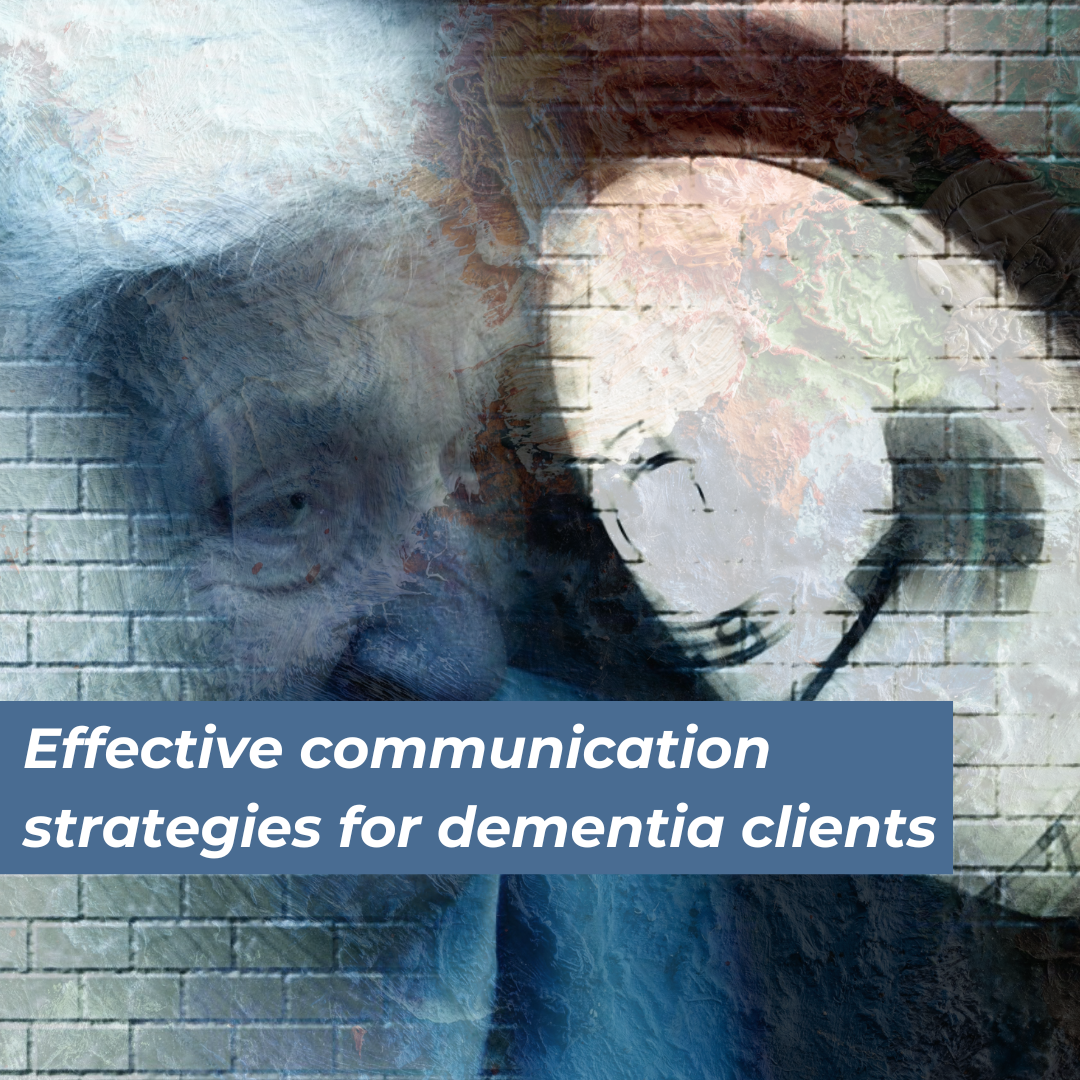Communicating in dementia care can present unique challenges, yet it is essential for providing quality, compassionate support. Those with the disease often experience memory loss and have difficulty processing information, which has potential to make both verbal and non-verbal communication more complicated. As a result, healthcare workers must be equipped with strategies that help bridge these gaps to make communication clearer, meaningful, and respectful. By adopting tailored approaches, healthcare workers can promote an environment where clients feel valued.

Be patient and allow time to process information
Dementia can affect a person’s memory and cognitive functions, making it harder for them to process information quickly. As a result, it is important to be patient. Give individuals time to absorb what you have said and respond without rushing or interrupting. A calm, unhurried approach will allow them to feel more comfortable and reduce the anxiety that can come from trying to keep up with fast-paced environments.
Use clear, simple language
When speaking to someone with dementia, use short, simple sentences. Avoid complex words, jargon, or abstract concepts, as these can create unnecessary confusion. Instead, keep your language straightforward, direct, and to the point. This approach helps ensure your message is clear and easily understood, which reduces the stress for both you and the person you are speaking with.
Maintain eye contact and use positive body language
Non-verbal communication plays a huge role in connecting with someone living with dementia. Make sure to maintain eye contact and use a calm, reassuring tone of voice. Your facial expressions, gestures, and posture should convey warmth, understanding, and respect. Smiling, nodding, and a gentle touch on the arm can help establish trust and make the person feel acknowledged.

Use visual aids and gestures
When words alone may not be enough, incorporate visual aids, such as pictures, objects, or written instructions, to assist in communication. For instance, showing a toothbrush while asking the person if they want to brush their teeth can help provide context. Gestures, such as pointing, can also aid understanding. These visual cues can help reinforce what you are saying and make it easier for the person to grasp your message.
Focus on the person’s emotional state
Dementia often impacts a person’s ability to process and articulate their emotions. Therefore, it is vital to tune into their emotional state. If someone seems agitated or upset, try to recognise the underlying feelings, even if they are unable to express them clearly. Speak in a calm, soothing voice, and offer reassurance. Understanding emotions and responding with empathy can significantly ease moments of distress and help maintain integrity.
Minimise distractions
Creating a calm, quiet environment can significantly enhance communication. Minimise distractions such as loud noises, bright lights, and background TV sound when speaking with someone with dementia. By reducing external stimuli, you give the person more space to focus on the conversation and respond more effectively. Additionally, make sure you are at eye level with the person when speaking to avoid overwhelming them.

Rephrase and redirect if necessary
It is common for those with dementia to forget details, experience confusion, or repeat themselves. Rather than correcting them, try rephrasing their words or redirecting the conversation. If something they say does not seem to make sense, acknowledge their emotions, and gently guide the conversation to a new topic or task, maintaining a supportive and empathetic tone. This approach helps maintain their dignity, while also promoting a positive interaction.
Be mindful of the environment
The setting in which you communicate can impact the success of your interactions. A quiet, relaxing space is conducive to better communication. Bright lights, loud noises, or busy surroundings can be overwhelming. When talking to someone with dementia, choose a calm and familiar environment, and make sure they are comfortable before starting the conversation.
Use repetition when needed
Repetition is a common symptom of dementia, as memory and cognitive functions decline over time. If a person repeatedly asks the same question or brings up the same topic, it is important to stay calm and patient. Gently respond to the question again, and if appropriate, offer reassurance. For many individuals who live with dementia, repetition can provide comfort and a sense of security, helping them feel anchored in the present moment.
Adapt to their preferences
Each person living with dementia is unique, and their communication preferences may vary. Some individuals may prefer certain phrases, tones, or routines. Take the time to learn about their preferences and adapt your communication to what works best for them. By personalising your approach, you can enhance the individual’s ability to engage and connect with you.

Communicating effectively with someone living with dementia is not just about conveying information – it is about connecting, understanding, and providing a sense of security. Through patience, respect, and empathy, healthcare workers can create an environment where those with dementia feel valued and heard.
At Skills Centre Australia, we offer a dedicated, industry-recognised training that supports healthcare workers to improve their communication with those living with dementia. To learn more about the course, or to enrol, visit the course page on our website: https://kcskillscentre.com.au/training/dementia-training-kc-skills-centre/.


